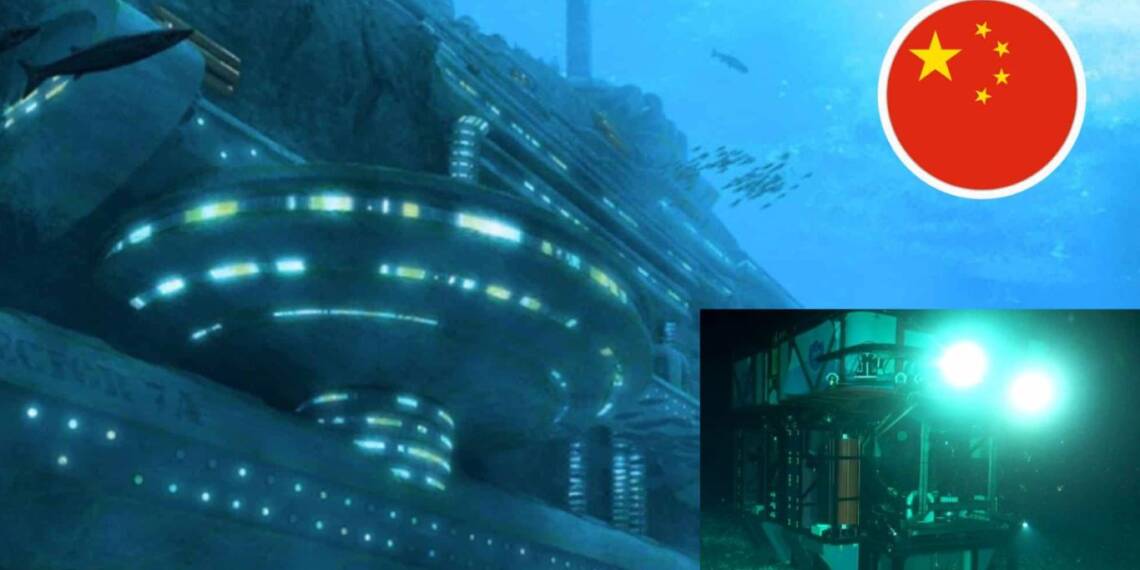China is preparing to launch one of its most strategic and scientifically ambitious projects yet: the world’s first permanent undersea research station dedicated to studying gas hydrates—crystalline structures of methane trapped in ice, often dubbed “ice on fire.” More than just a technological marvel, the project signals a bold new front in Beijing’s effort to control the contested South China Sea and secure future energy dominance.
The deep-sea station, confirmed by Beijing on March 1, 2025, will be located in methane-rich “cold seep” zones. The mission aims to put six researchers living underwater for extended periods by 2030. The researchers will monitor methane flows and test extraction methods. However, despite this scientific use, the powerful geopolitical motives can not be ignored. Let’s understand this through the lens of geopolitics and energy.
Rewriting the Energy Map
The stakes are enormous. China estimates that the cold seeps in the South China Sea hold 80 billion tonnes of oil-equivalent energy—eclipsing the 50 billion tonnes of proven oil reserves in the Persian Gulf. If even a fraction of this energy is tapped, it could shift the centre of gravity in global energy geopolitics from West Asia to East Asia.
Methane hydrates are considered the next great energy frontier, and for good reason. Stored in icy formations beneath the seafloor, they hold up to 160 times their volume in methane gas. And methane burns cleaner than coal, producing roughly half the CO₂ emissions. China is the largest energy consumer in the world and needs a domestic source of cleaner energy in order to ease its reliance on imported oil. The energy is essential for the growing naval power.
But it’s not just about energy—it’s about control.
A Strategic Move in Contested Waters
The Undersea station is being built in one of the world’s most militarized and contested maritime regions. China’s nine-dash line, which claims nearly all of the South China Sea, overlaps with territorial claims by Vietnam, the Philippines, Malaysia, and Brunei. The region has seen repeated flare-ups, from naval standoffs to the construction of artificial islands bristling with military infrastructure.
In 2016, the Permanent Court of Arbitration ruled that China’s sweeping claims had no legal basis. Beijing dismissed the ruling. Since then, Chinese ships and coast guard vessels have increased pressure on rival claimants, patrolling disputed zones, blocking fishing boats, and asserting dominance through presence.
Now, with this undersea research station, China adds a new layer of dominance. It’s not just a scientific outpost—it’s a foothold. An assertion of sovereignty dressed in the robes of marine science.
Securing the Lifeline
Energy fuels power—especially military power. China’s navy, air force, and overseas operations all rely heavily on imported oil. Up to 85% of that oil flows through the Strait of Malacca, a narrow chokepoint between Malaysia and Indonesia that could be easily blocked in times of conflict.
The South China Sea, in contrast, sits closer to home. By tapping its methane reserves, China reduces exposure to foreign supply routes and gains energy security right in its backyard. That has positive implications for military planning. The People’s Liberation Army Navy (PLAN) can shift its focus from protecting faraway oil flows to securing the region around its own backyard.
Also Read: China unleashes “game changer” Deep-Sea Cable cutter
Technology Meets Tactics
China’s submersibles—like Jiaolong and Haima—will play a key role in this push. These advanced vehicles can reach extreme depths, track methane flows, and even observe unique cold-seep ecosystems, including mineral-encrusted crustaceans and bioluminescent fish. But beyond scientific curiosity, this data helps map the undersea landscape in military terms: where to hide sensors, deploy underwater drones, or detect enemy subs.
The knowledge gleaned from the seafloor—pressure conditions, gas flow dynamics, terrain patterns—can provide tactical advantages. Seabed mapping is about more than energy; it’s about laying the groundwork for future conflict or deterrence.
Global Implications and High-Risk Stakes
If China can master the extraction of methane hydrates—something no country has done at scale—it would not only secure an energy edge but also gain powerful leverage in global affairs. The gas hydrate boom could do for China what the oil boom did for the US in the 20th century: unlock economic strength and underpin military power.
Moreover, the US and its allies are closely observing. Though Washington makes no claims in the South China Sea, it regularly sends warships through the region under “freedom of navigation” operations. The message is clear: China’s growing presence won’t go unchallenged.
Conclusion
China’s technological enhancement in the form of deep-sea research stations, cable-cutting devices and a large navy would pose a direct geopolitical threat to all its neighbours and traditional powers in the world. However, for China, it is a calculated and realistic move to strengthen its position as an emerging power in the world and Indo-Pacific.








